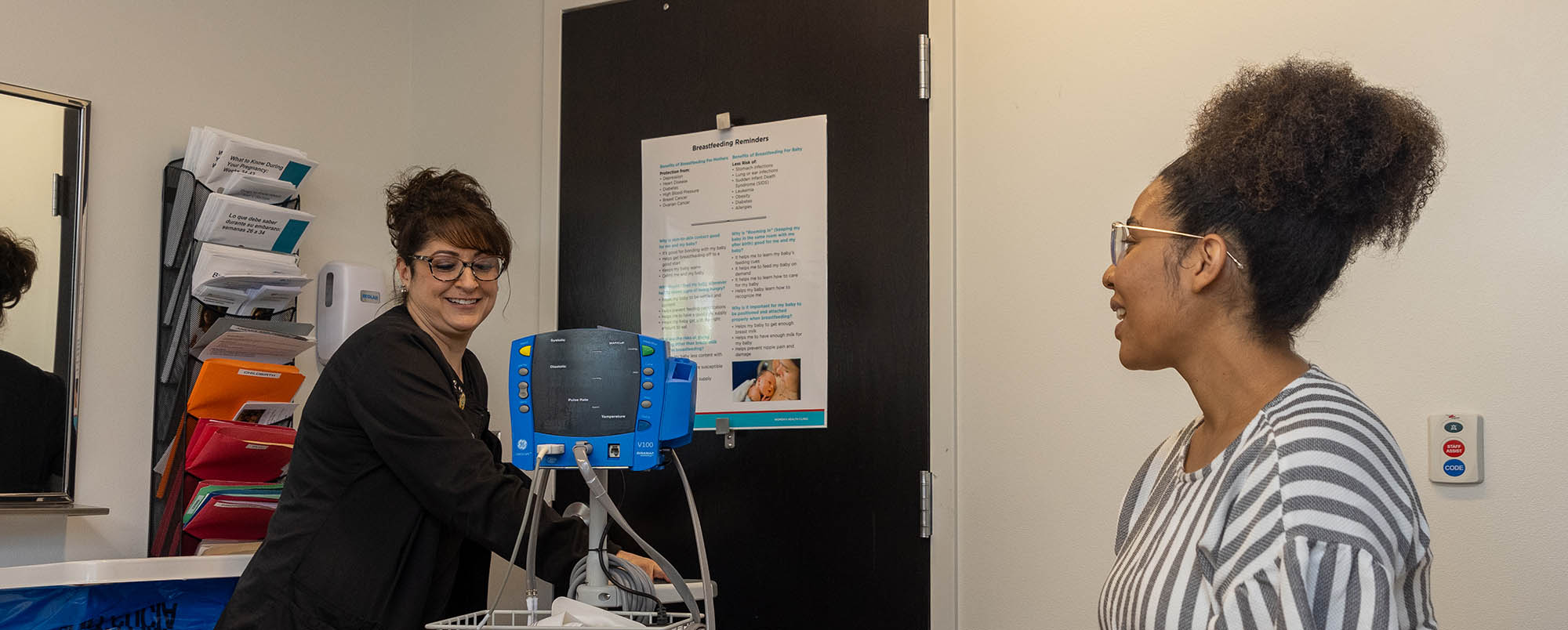After having a baby, you’re probably ready for your body to get back to normal. You may be surprised to find out that it takes some time for your body to look and feel more like it did before you were pregnant.
Your body went through something incredible—growing and delivering a tiny human. After delivery, the changes to your skin, muscles, hormones and internal organs take time to recover.
While everyone’s recovery time is different, many of the changes to your body aren’t permanent. However, there may be a new “normal” that you experience and it is important to try to embrace the incredible journey and transformation that your body went through. With some time, patience and care, your body will feel more normal soon. Here are a few of the common body changes to expect after childbirth.
1. Vaginal Bleeding and Discharge
Everyone has vaginal bleeding and discharge after childbirth. The discharge starts out heavy, thick and dark red. Also known as lochia, it is made of extra blood, mucus and uterine tissue. Lochia looks like a heavy period. You may see some blood clots, no larger than a lime.
The bleeding starts to slow down around the fourth day. It gets thinner and changes color, fading from dark red to pink and then brown or yellow. The bleeding stops four to six weeks after delivery.
You should wear menstrual pads to absorb the blood. Do not use tampons or menstrual cups for six weeks after giving birth. While you are healing, inserting items into your vagina can increase the chance of infection.
This is normal and likely nothing to worry about. Call the doctor if you have any of these symptoms because you may have a serious infection:
- Bleeding gets heavier, soaking through a pad in less than one hour
- Fever
- Large clots
- Pelvic pain or cramps that get worse
Skin Changes
“You have that pregnancy glow!” During pregnancy, your skin changes in many ways—some better than others. The skin stretches as your belly grows. Increased hormones can cause acne and melasma (dark spots on the skin).
Some of these changes improve after childbirth, but some are permanent depending on your age, genetics, weight gain during pregnancy and overall health. Common skin changes after pregnancy include:
- Stretch marks—Thin, silvery scars on your belly, breasts, thighs, hips or bottom. They start out red, brown or purple and fade within a year but won’t disappear entirely. Stretch marks are caused by hormones, genetics and how fast you gain weight during pregnancy. Creams can help lighten stretch marks, but many are not safe to use while breastfeeding. Your doctor can help you find a safe treatment.
- Acne, dry or oily skin—Breakouts or dry skin after delivery are caused by changing hormones. The best way to stop skin problems is to drink lots of water, eat a healthy diet and stick to a regular skin care routine. Use a gentle cleanser and moisturizer. Stay out of the sun and use plenty of sunscreen.
- Loose belly skin—Your stomach skin and abdominal muscles can stretch to the point of separation during pregnancy. That’s why it’s common to still look pregnant when you leave the hospital and for several weeks afterward. While recovering, eat a healthy diet and drink lots of water. When your doctor gives the okay, add moderate exercise like walking, Pilates or yoga. While the skin may not tighten back up, the muscles underneath often do.
Talk with your doctor if any of these skin changes bother you. We can make a treatment plan to help you feel better.
Related reading: Exercise After Pregnancy: When to Start and What to Do
3. Leaking Urine or Sudden Urges to Pee
Also called urinary incontinence, this is common during pregnancy and after childbirth. In fact, about one-third of people continue to have problems up to three months after delivery.
Pregnancy and childbirth put extra strain on your pelvic-floor muscles, which support your bladder and uterus. Weakened pelvic muscles can cause urine to leak when you laugh, cough, exercise or sneeze. Women who have a vaginal birth are more likely to have incontinence than women who had C-section.
Kegel exercises can help strengthen your pelvic-floor muscles. To find your pelvic-floor muscles, try stopping your pee mid-stream. Once you’ve found them, squeeze, hold for three seconds, and release. Repeat 10 times for one set. Do three sets per day—one sitting, one standing, and one lying in bed before you go to sleep.
Start Kegels as soon as you get home from giving birth. With daily practice, leaking urine should lessen in about three months. If this does not improve please ask your doctor about starting pelvic floor physical therapy.
Remember, everyone’s recovery time after childbirth is different. Give your body time to heal. If you’re worried about symptoms, talk with your doctor. We’re here to help you feel better.

